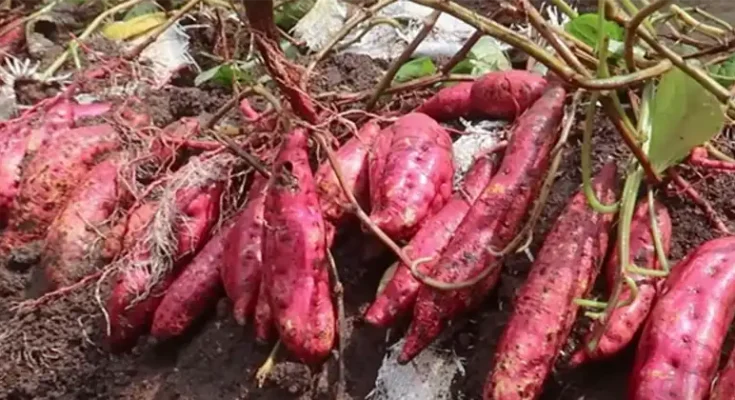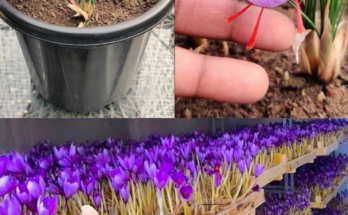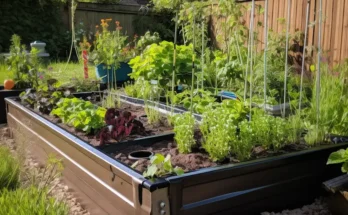Sweet potatoes are a delectable and nutritious addition to your home garden. Their ease of cultivation and generous yield make them a splendid choice for gardeners of all levels. Whether you have limited space or poor soil conditions, the solution lies in growing sweet potatoes using soil bags. This all-inclusive guide will take you through the step-by-step process of successfully nurturing sweet potatoes in soil bags.
Essential Materials:
Before you embark on your sweet potato growing journey, be sure to gather the following items:
- Sweet potato slips (young, rooted plants)
- Soil bags (or large grow bags)
- High-quality potting soil or a mixture of compost and garden soil
- Watering can or garden hose with a gentle spray nozzle
- Fertilizer suitable for root vegetables
- Garden trowel or hand spade
- Stakes or trellises (optional)
- Mulch (straw or leaves)
Step 1: Choosing the Ideal Location
Select a sunny spot in your garden where your sweet potatoes can bask in a minimum of 6-8 hours of sunlight daily. Ensure that this area boasts good drainage to avoid waterlogging, as sweet potatoes are averse to saturated soil.
Step 2: Preparing the Soil Bags
If you opt for commercial soil bags or grow bags, fill them with high-quality potting mix, leaving a few inches of space at the top. Alternatively, you can concoct your own mixture by blending equal parts compost and garden soil. Sweet potatoes thrive in loose, well-draining soil, so ensure your mix is well-aerated.
Step 3: Planting Sweet Potato Slips
Sweet potato slips, which are young, rooted plants, can be acquired from a nursery or cultivated from sweet potatoes at home. Plant these slips approximately 4-6 inches deep in the soil bags, spacing them at intervals of 12-18 inches. Position each slip vertically with the roots facing downward and the leafy portion above the soil surface.
Step 4: Proper Watering
Sweet potatoes require consistent moisture, so it’s essential to water them regularly to maintain uniformly moist soil without over-saturation. It’s advisable to water them early in the morning, allowing the leaves to dry during the day, reducing the risk of fungal diseases.
Step 5: Fertilization
Nourish your sweet potatoes with a balanced, slow-release fertilizer. Apply it following the package instructions, typically a few weeks after planting and periodically throughout the growing season. Be cautious not to over-fertilize, as this can result in excessive foliage growth and smaller tubers.
Step 6: Optional Support and Trellising
For those with limited garden space or the desire to encourage larger sweet potatoes, consider implementing stakes or trellises. You can gently secure the vines to these supports as they grow, making harvesting more manageable as well.
Step 7: Mulching
To conserve soil moisture and suppress weed growth, apply a layer of mulch around your sweet potato plants. Suitable mulch materials include straw, leaves, or even black plastic. Ensure that the mulch doesn’t come into direct contact with the stems to prevent rot.
Step 8: Harvesting

Sweet potatoes are typically ready for harvest around 100-120 days after planting, dependent on the variety and growing conditions. Carefully excavate around the base of the plant and gently lift the tubers from the soil, taking care not to damage them in the process.
Step 9: Curing and Storage
Following the harvest, sweet potatoes need to undergo a curing process to enhance their flavor and heal minor injuries. Place them in a warm, humid location (80-90°F or 27-32°C) for approximately 10-14 days. After curing, store your sweet potatoes in a cool, dark place with proper ventilation to extend their shelf life.
Cultivating sweet potatoes in soil bags is an excellent approach to savoring this nutritious and flavorful root vegetable, even in confined spaces or less-than-ideal soil conditions. Armed with the right materials and diligent care, you can successfully nurture your own sweet potatoes at home. Follow this detailed guide, and before you know it, you’ll be indulging in your very own homegrown sweet potatoes. Happy gardening!



